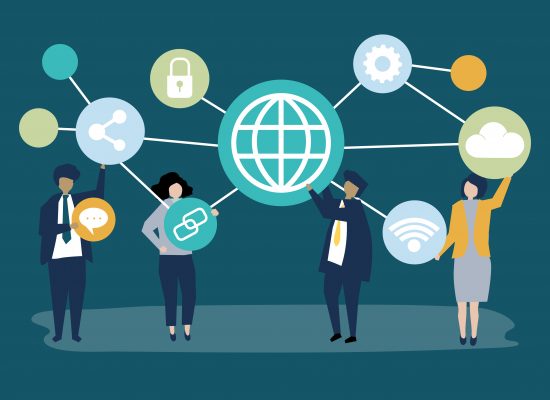AI bots are not set to replace customer service agents; they are designed to augment the experiences of businesses and consumers alike. Customers will consistently prioritize the opportunity to engage with a human representative, however, for straightforward inquiries, chatbots can expedite the process of providing customers with solutions far more efficiently than humans can.
AI-powered chatbots offer more than just basic customer support. They can be deployed for various purposes, including sales and lead generation. A sales chatbot can engage with potential customers, answer product-related questions, and guide them through the purchasing process. By leveraging marketing automation techniques, businesses can use chatbots to nurture leads and drive conversions, ultimately boosting revenue.
Understanding the Significance of Customer Experience
Businesses must prioritize customer experience because it directly impacts their success and sustainability. It serves as a critical differentiator, allowing businesses to stand out in crowded markets and attract and retain loyal customers. With rising customer expectations for seamless, personalized interactions across all touchpoints, delivering exceptional experiences has become essential for maintaining brand reputation and driving positive word-of-mouth recommendations. Businesses that prioritize customer experience not only enhance customer satisfaction but also build long-term relationships that ultimately contribute to sustainable growth. Read more about SuiteCRM and Chatbots and the evolution of the business landscape.
The Impact of AI Chatbots on Customer Experience
Improved Customer Satisfaction
AI-powered chatbots are designed to provide instant and accurate responses to customer inquiries, leading to higher levels of satisfaction. By addressing customer needs promptly and efficiently, businesses can foster positive relationships and build trust with their audience.
Reduced Wait Times
Long wait times can be a major source of frustration for customers. AI-powered chatbots help alleviate this issue by offering immediate assistance 24/7. Whether it's answering FAQs or resolving simple queries, chatbots ensure that customers receive timely support without having to wait in lengthy queues.
Personalized Experience
One of the key advantages of AI-powered chatbots is their ability to deliver personalized experiences to customers. Through data analysis and machine learning algorithms, chatbots can tailor interactions based on individual preferences, past interactions, and browsing behavior. This level of personalization enhances the overall customer experience and increases engagement.
FAQ Chatbot
FAQ chatbots specialize in handling common customer queries and providing instant solutions. By automating responses to frequently asked questions, businesses can save time and resources while ensuring that customers receive the information they need quickly and efficiently.
Sales Chatbot
AI-powered sales chatbots play a crucial role in lead generation and conversion optimization. These bots engage with potential customers, answer product-related questions, and guide them through the sales funnel. By automating the sales process, businesses can capture leads more effectively and drive revenue growth.
Marketing Automation
Chatbots can also be leveraged for marketing automation purposes, such as sending personalized messages, recommending products, and nurturing leads. By automating repetitive marketing tasks, businesses can streamline their workflows and deliver targeted messages that resonate with their audience.
Enhanced Customer Experience
Ultimately, the integration of AI-powered chatbots leads to an overall improvement in the customer experience. By offering instant support, personalized interactions, and seamless navigation, chatbots contribute to customer satisfaction and loyalty.
Implementing Chatbots for Enhanced Customer Experiences
To effectively utilize chatbots in enhancing customer experiences, businesses can follow these steps:
Identify Customer Pain Points
Determine common pain points and challenges faced by customers throughout their journey with your business. This could include long wait times for support, difficulty finding information, or cumbersome purchasing processes.
Define Chatbot Objectives
Clearly outline the specific objectives you aim to achieve with chatbots, such as reducing wait times, providing instant support, improving personalization, or boosting sales and lead generation.
Select the Right Chatbot Platform
Choose a chatbot platform or solution that aligns with your business needs and objectives. Consider factors such as ease of integration, customization options, scalability, and compatibility with existing systems.
Design Conversational Flows
Develop conversational flows that guide users through various interactions with the chatbot. Ensure that the chatbot can handle a wide range of queries and provide relevant responses based on user input.
Implement FAQ and Sales Chatbots
Deploy chatbots tailored to specific functions, such as FAQ chatbots to address common inquiries and sales chatbots to assist with product recommendations, purchases, and lead generation.
Personalize Interactions
Leverage artificial intelligence and data analytics to personalize interactions with customers. Use customer data to tailor responses, recommendations, and offers based on individual preferences and behavior.
Integrate Chatbots Across Channels
Integrate chatbots seamlessly across multiple channels, including websites, mobile apps, social media platforms, and messaging apps. This ensures consistent and accessible support for customers regardless of their preferred communication channel.
Train and Test Chatbots
Train chatbots to understand and respond accurately to user queries by providing ample training data and conducting thorough testing. Continuously refine and optimize chatbot performance based on user feedback and analytics.
Monitor Performance and Analytics
Regularly monitor chatbot performance metrics and analytics to track usage patterns, user satisfaction, conversion rates, and other key performance indicators. Use this data to identify areas for improvement and optimization.
Iterate and Improve
Continuously iterate and improve chatbot capabilities and functionalities based on user feedback, changing customer needs, and evolving business objectives. Regularly update chatbot scripts, conversational flows, and features to ensure they remain effective and relevant over time.
Conclusion
AI-powered chatbots represent a significant advancement in optimizing customer experience. By seamlessly integrating artificial intelligence into customer service strategies, businesses can elevate interactions, streamline processes, and build stronger connections with their audience. These chatbots not only improve efficiency by reducing wait times and providing instant solutions but also offer personalized experiences tailored to individual preferences. As businesses continue to prioritize the enhancement of customer satisfaction, AI-powered chatbots emerge as invaluable tools, paving the way for enhanced engagement, and increased loyalty.
Ready to take your business to the next level with Artificial Intelligence? Contact RT Dynamic today to explore how our cutting-edge AI and ML services can transform your customer experience strategy



